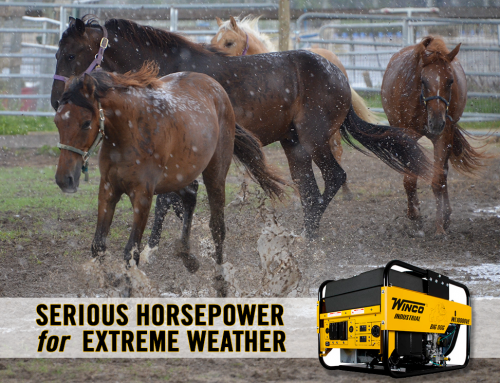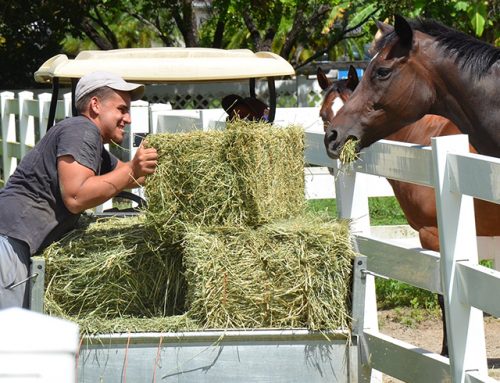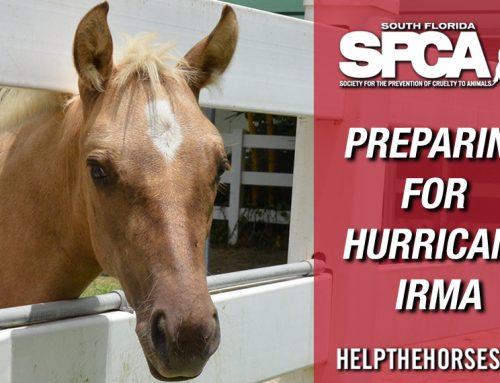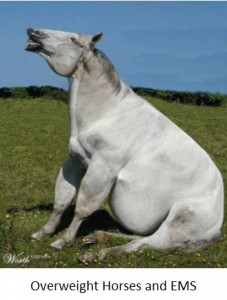 The horses at the South Florida SPCA rescue ranch most often come to us severely underfed, scoring usually between 1 and 3 on the Henneke Body Condition scale. But the average pleasure horse can have a different problem than Defense Team, a recent arrival. Instead, being overweight is the problem. This can be especially true of rescued horses – adopters will sometimes overfeed, trying to “make up” for their previous bad fortune.
The horses at the South Florida SPCA rescue ranch most often come to us severely underfed, scoring usually between 1 and 3 on the Henneke Body Condition scale. But the average pleasure horse can have a different problem than Defense Team, a recent arrival. Instead, being overweight is the problem. This can be especially true of rescued horses – adopters will sometimes overfeed, trying to “make up” for their previous bad fortune.
Even though the intentions are good, we have to understanding that any horse with a body condition score of 6 or higher is overweight. So following are the 7 Things to Consider if Your Horse is Overweight:
1. Overweight Horses—Diabetic?
Actually, the term “diabetic” applies to humans. The correct term for horses and donkeys is Equine Metabolic Syndrome (EMS). It isn’t hard to find an overweight horse, so please read on. That cute little, pudgy pony? Trouble.
Research has found that EMS is closely related to obesity in horses. Obesity in people often leads to insulin resistance. Obese horses become resistant to their own insulin as well. And insulin resistance in horses leads to a host of problems.
Not every horse is susceptible, EMS can occur without a horse being overweight. But however it develops, this disorder can be devastating, so let’s look closer.
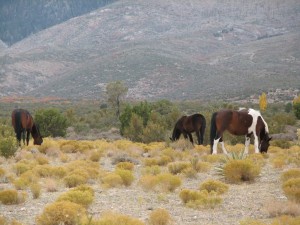 2. Horses are Browsers
2. Horses are Browsers
Horses evolved over thousands of years, and their nature is to browse for what they eat. In the wild, the plants horses eat are few and far between. This combination of nature and sparse vegetation prompt wild horses to move 15 to 20 miles every day for their food and water.
3. Horses Need to Eat All the Time (Almost)
To stay healthy, horses need nourishment moving through their gut 24/7. However, many horses are fed two or three smaller meals daily and kept in a stall with long periods of inactivity and nothing to eat. This compels him to eat in a way that isn’t his nature.
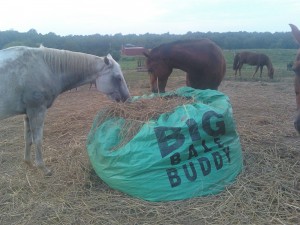 A practice that will keep your horse at a healthy weight and out of metabolic trouble, is giving him free access to good quality hay. You may be concerned that if your horse is nibbling 24/7, his body condition score will skyrocket. A valid concern, but most horses overeat because of those smaller, intermittent feedings–they believe each time that it’s all they’re going to get, and therefore gobble up everything until it’s gone.
A practice that will keep your horse at a healthy weight and out of metabolic trouble, is giving him free access to good quality hay. You may be concerned that if your horse is nibbling 24/7, his body condition score will skyrocket. A valid concern, but most horses overeat because of those smaller, intermittent feedings–they believe each time that it’s all they’re going to get, and therefore gobble up everything until it’s gone.
It’s important to transition your horse to free choice hay over two to three weeks. They’ll learn the hay will always be there, and eating behavior will change from gorging to slow browsing. This way of feeding helps reduce boredom, and will help them stay free of maladies like ulcers and colic, and vices like cribbing, stall weaving, and eating their bedding material.
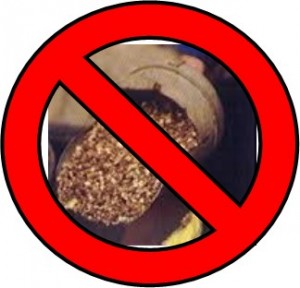 4. Sweets Are Trouble
4. Sweets Are Trouble
Sweet feeds have gotten a lot of attention regarding EMS. And while sweet feed is generally bad news for a metabolic horse, metabolic problems can develop for a horse without ever having an ounce of sweet feed. But if your horse primarily grazes here’s something you might not expect:
NO PASTURE GRASS IS COMPLETELY SAFE FOR AN OBESE HORSE.
Researchers like Dr. Kathryn Watts at SaferGrass.org have found the grasses our horses graze, and hay from those grasses, contain varying amounts of non-structural carbohydrates, NSCs, sugars, starches, and fructans.
Grazing a well fertilized pasture, even a fit horse can get in trouble. And overweight horses are in real danger because they’re commonly insulin resistant. They produce more insulin than they need, and high sugar grass or hay can also elevate blood sugar.
Problems resulting from insulin overload include laminitis and founder (not the same thing, we’ll talk about this in an upcoming post), and can cause liver and kidney failure.
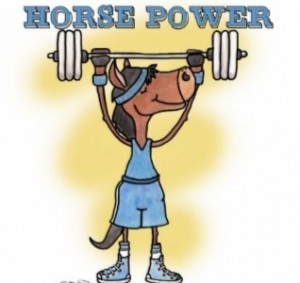 5. A Recovery Plan
5. A Recovery Plan
Get your equine vet involved in the treatment plan, but the following things are critical:
1. The horse must get regular (daily) exercise.
2. Their daily calorie intake must be less than their body needs—No Feed.
3. What they do eat should contain the lowest amount of NSCs possible.
NO PASTURE GRAZING.
If you’re feeding any concentrated feed at all, stop—now. Other than regular exercise mentioned above, a metabolic horse needs only hay, water and minerals. Granted, meeting the exercise demand can be a real challenge. But there are two ways you can turn your horse out for exercise and not risk him gorging himself on all that green grass.
6. Dry Lots: Good For Your Horse
Keeping your horse on a dry lot can be the answer for an obese horse. Monitoring and controlling what she eats is easier. Also, you can spread hay around the lot, encouraging your horse to browse/move. Place minerals as far from his water encourages more movement as does a buddy. One horse stands around a lot, two horses move each other more.
7. Grazing Muzzle Approach
So you don’t have access to a dry lot, only green pastures? There’s an answer—the dreaded grazing muzzle. Everyone hates these things, but they can help a lot.
A grazing muzzle doesn’t entirely keep a horse from nibbling some grass, but the amount he gets will be minimal, so it won’t cause further harm. But wait, there’s more!
Because the muzzle makes it hard for her to get to the tasty green, she’ll move more just trying get that next precious blade. So a grazing muzzle helps solve two challenges; controlling intake and increasing movement.
With a muzzle, bring your horse in for hay feedings (0.75% of body weight) twice a day—yes, free choice hay is the best, but we’ll start that once her body score is below 6. You also might need to add to the exercise, especially if your horse has no buddy to keep him moving.
If your horse resists moving at all, you must consider whether your horse is foot-sore from laminitis. This problem is commonly called founder, but founder results from laminitis. Laminitis is more than we can cover this time, but we’ll come back to it in another article.
Rest assured most pleasure horses that are overweight will lose weight and become healthier if you follow the guidelines above. And we’ve added information at the links in this article, so check them out. We’ll cover other horsekeeping going forward, so stay tuned, sign up for our email updates (consider a link to an email sign up page here) at the bottom of this page, and happy horsing around!
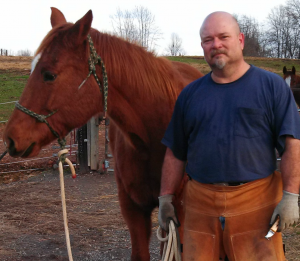 By John Muccillo
By John Muccillo
John writes web copy, and operates Maza-Cholah Holistic Hoofcare, a barefoot hoofcare practice. He and his wife Patti moved from South Florida in late 2004 to Middle Tennessee with five horses they adopted from SFSPCA. After Hurricane Wilma they came back to the rescue ranch and adopted two more horses, a burro they named Fred, an Irish terrier, and a canary. John and Patti live on their 56 acre AnneRobbin Farm with 10 horses, seven dogs, two cats, and Fred.
[social_button button=”facebook” furl=”https://spca-sofla.org/horsekeeping-7-things-to-consider-if-your-horse-is-overweight/” fsend=”on” flayout=”button_count” fshow_faces=”on” fwidth=”450″ faction=”recommend” fcolorsheme=”light”]
